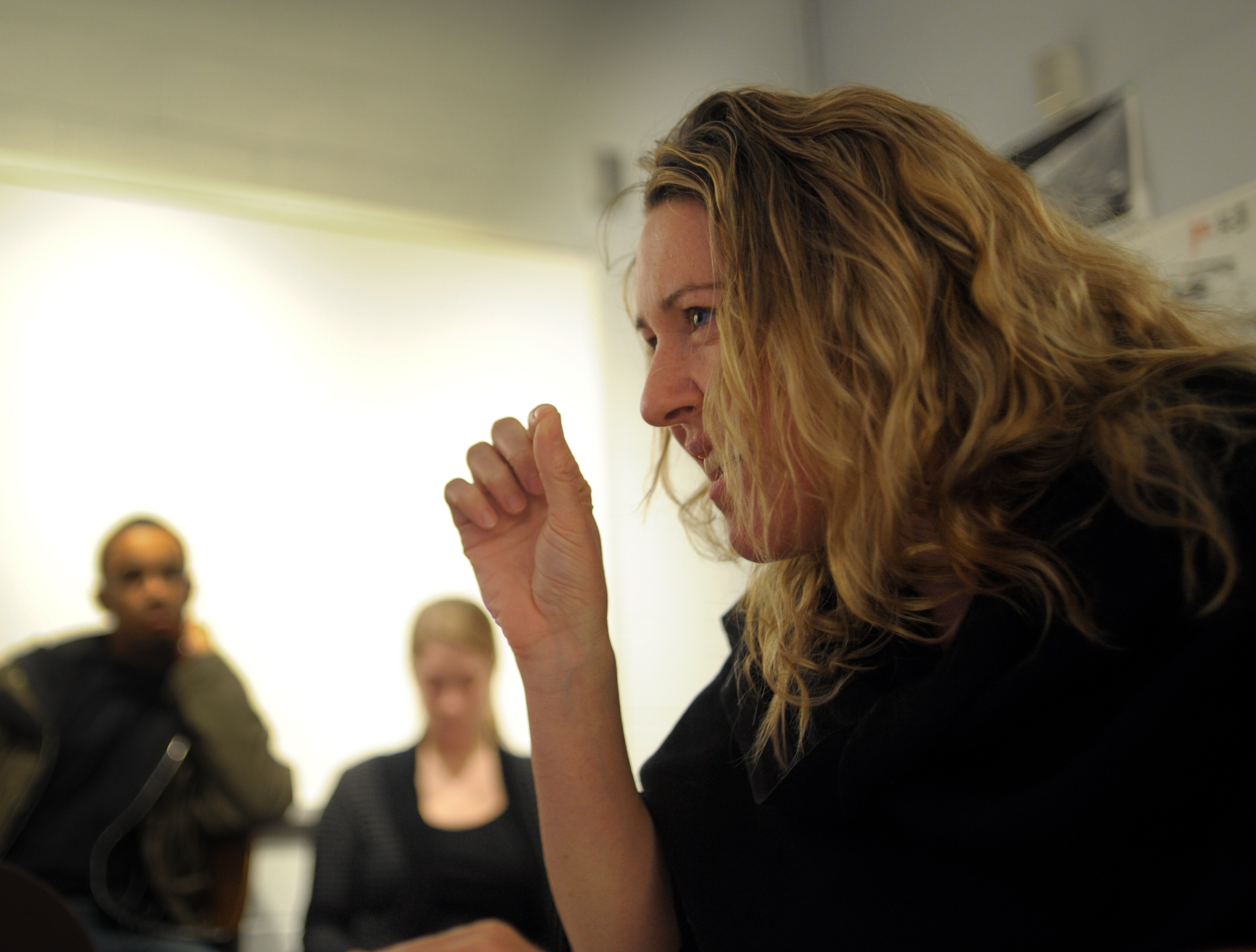
Melanie Burford is a Pultizer Prize winning photojournalist, and Emmy award winning videographer from New Zealand. Currently residing in Brooklyn, NY, Burford teaches at Columbia University and is a freelance photographer. She came to lecture, discuss, and advise photojournalism students in the PJ lab and William Snyder’s class on December 10, 2009. A two-year veteran of Snyder’s Pulitzer Prize winning team, (coverage of the Katrina Hurricane) Burford reinforced emphasis on the power of storytelling rather than photography.
Burford says she is motivated by a genuine love for people. It is this that allows her subjects to become incredibly comfortable. When it comes to finding stories, constructing stories, and distributing stories, her focus remains on her love for the people she interviews and photographs. Even the medium of photography is subordinate to this care for her relationships with people. In recent years she has taught herself video and audio techniques, relying on a rhythmic structure to craft her story in interesting ways. Intertwining music, a character or angle, and some kind of secondary action creates an interesting video piece, in her experienced opinion.
She recommends keeping in contact and collecting phone numbers from all people you interact with on assignment, any of those whose meaningful interaction with you suggests they might be part of another story. It is through her ability to maintain good relationships with her contacts that has given her access to high pressure and important photo-stories. This kind of interaction with one’s subject was brought into question by Amanda Berg. She asked how to best remove oneself from a situation when a photographer has become enthralled with a subject’s words or actions. Burford suggested to make a verbal commitment, being honest enough to excuse yourself from the conversation. Then, you can withdraw to the background, and begin practicing photography.
Technical ability and style, while Burford admits she is always working on, must become learned and subconscious in order to focus on the story to the extent that she does. When looking at students’ photographs at night, Burford recommends not to rely on high ISO shooting, rather using your body as a tripod and shooting for 2 to 6 seconds.
The RIT NPPA and 3rd year photojournalism class thanks Mel for her contributions to our classroom conversation.
Posted: December 11, 2009 by ritnppa
Melanie Burford
Melanie Burford is a Pultizer Prize winning photojournalist, and Emmy award winning videographer from New Zealand. Currently residing in Brooklyn, NY, Burford teaches at Columbia University and is a freelance photographer. She came to lecture, discuss, and advise photojournalism students in the PJ lab and William Snyder’s class on December 10, 2009. A two-year veteran of Snyder’s Pulitzer Prize winning team, (coverage of the Katrina Hurricane) Burford reinforced emphasis on the power of storytelling rather than photography.
Burford says she is motivated by a genuine love for people. It is this that allows her subjects to become incredibly comfortable. When it comes to finding stories, constructing stories, and distributing stories, her focus remains on her love for the people she interviews and photographs. Even the medium of photography is subordinate to this care for her relationships with people. In recent years she has taught herself video and audio techniques, relying on a rhythmic structure to craft her story in interesting ways. Intertwining music, a character or angle, and some kind of secondary action creates an interesting video piece, in her experienced opinion.
She recommends keeping in contact and collecting phone numbers from all people you interact with on assignment, any of those whose meaningful interaction with you suggests they might be part of another story. It is through her ability to maintain good relationships with her contacts that has given her access to high pressure and important photo-stories. This kind of interaction with one’s subject was brought into question by Amanda Berg. She asked how to best remove oneself from a situation when a photographer has become enthralled with a subject’s words or actions. Burford suggested to make a verbal commitment, being honest enough to excuse yourself from the conversation. Then, you can withdraw to the background, and begin practicing photography.
Technical ability and style, while Burford admits she is always working on, must become learned and subconscious in order to focus on the story to the extent that she does. When looking at students’ photographs at night, Burford recommends not to rely on high ISO shooting, rather using your body as a tripod and shooting for 2 to 6 seconds.
The RIT NPPA and 3rd year photojournalism class thanks Mel for her contributions to our classroom conversation.
Category: PJ Perspectives